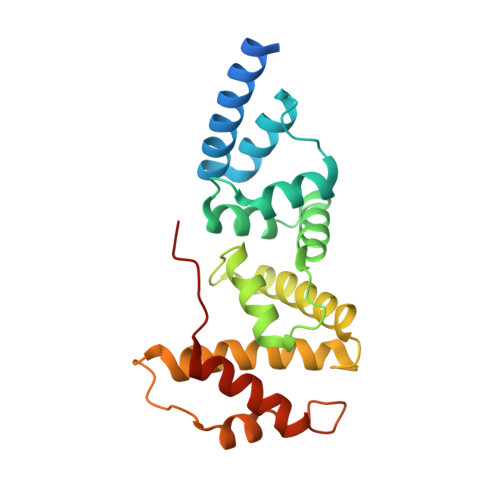Fragment-based identification of a locus in the Sec7 domain of Arno for the design of protein-protein interaction inhibitors.
Rouhana, J., Hoh, F., Estaran, S., Henriquet, C., Boublik, Y., Kerkour, A., Trouillard, R., Martinez, J., Pugniere, M., Padilla, A., Chavanieu, A.(2013) J Med Chem 56: 8497-8511
- PubMed: 24112024
- DOI: https://doi.org/10.1021/jm4009357
- Primary Citation of Related Structures:
4JMI, 4JMO, 4JWL, 4JXH, 4L5M - PubMed Abstract:
By virtual screening using a fragment-based drug design (FBDD) approach, 33 fragments were selected within small pockets around interaction hot spots on the Sec7 surface of the nucleotide exchange factor Arno, and then their ability to interfere with the Arno-catalyzed nucleotide exchange on the G-protein Arf1 was evaluated. By use of SPR, NMR, and fluorescence assays, the direct binding of three of the identified fragments to Arno Sec7 domain was demonstrated and the promiscuous aggregate behavior evaluated. Then the binding mode of one fragment and of a more active analogue was solved by X-ray crystallography. This highlighted the role of stable and transient pockets at the Sec7 domain surface in the discovery and binding of interfering compounds. These results provide structural information on how small organic compounds can interfere with the Arf1-Arno Sec7 domain interaction and may guide the rational drug design of competitive inhibitors of Arno enzymatic activity.
Organizational Affiliation:
Institut des Biomolécules Max Mousseron (IBMM), UMR 5247, CNRS, Universités Montpellier 1 et 2, Faculté de Pharmacie, 15 Avenue Charles Flahault BP14491, 34093 Montpellier Cedex 5, France.
















